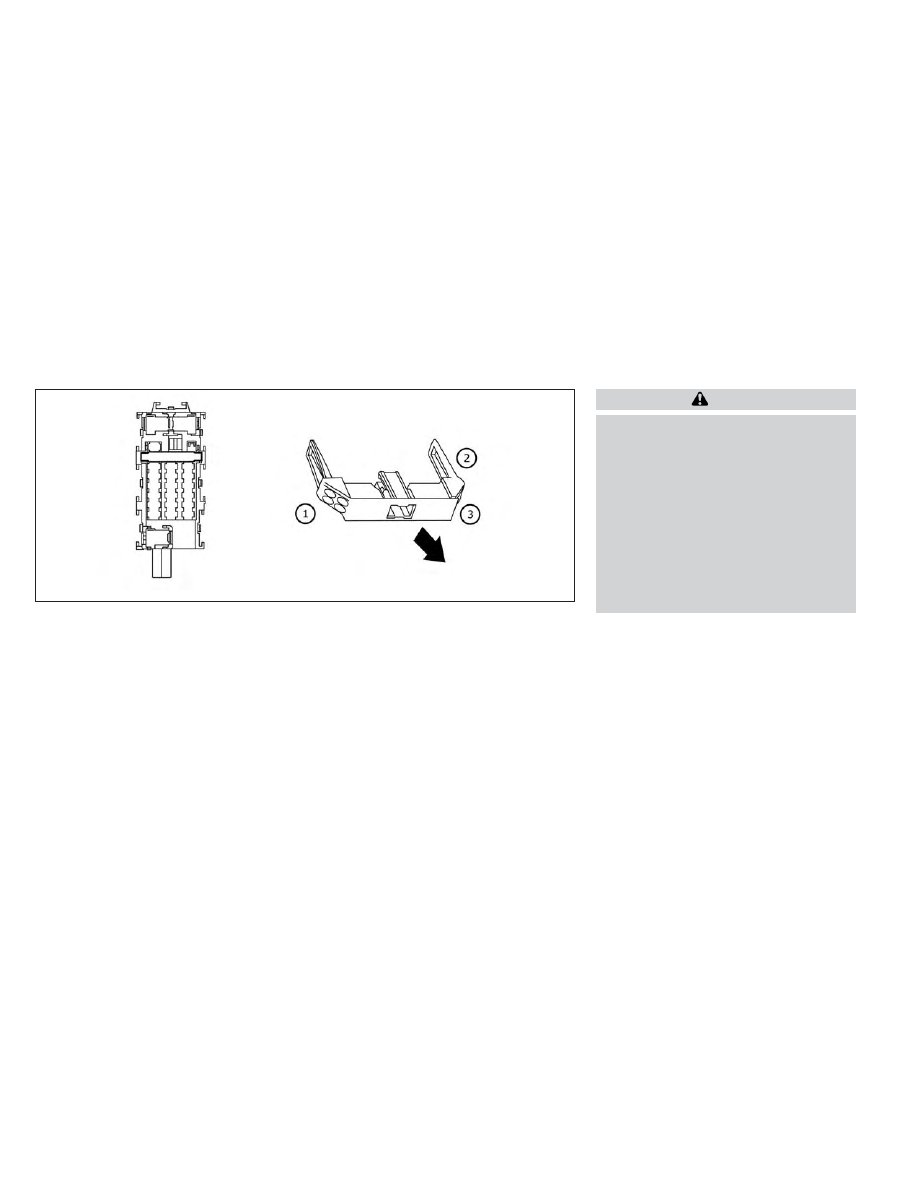Nissan Leaf (2023 year). Manual in english - page 34

Extended storage switch
If any electrical equipment does not oper-
ate, remove the extended storage switch
and check for an open fuse.
NOTE:
The extended storage switch is used for
long term vehicle storage. Even if the ex-
tended storage switch is broken it is not
necessary to replace it. Replace only the
open fuse in the switch with a new one.
How to replace the extended storage
switch:
1. To remove the extended storage switch,
be sure the power switch is in the OFF
position.
2. Be sure the headlight switch is in the
OFF position.
3. Remove the fuse box cover.
4. Pinch the locking tabs
O
1
and
O
2
found
on each side of the storage switch.
5. Pull the storage switch straight out from
the fuse box
O
3
.
CAUTION
•
Be careful not to allow children to
swallow the battery and removed
parts.
•
An improperly disposed battery can
harm the environment. Always con-
firm local regulations for battery
disposal.
•
When changing batteries, do not let
dust or oil get on the components.
•
There is danger of explosion if the
lithium battery is incorrectly re-
placed. Replace only with the same
or equivalent type.
LDI3205
NISSAN INTELLIGENT KEY® BATTERY
REPLACEMENT
Do-it yourself
8-19